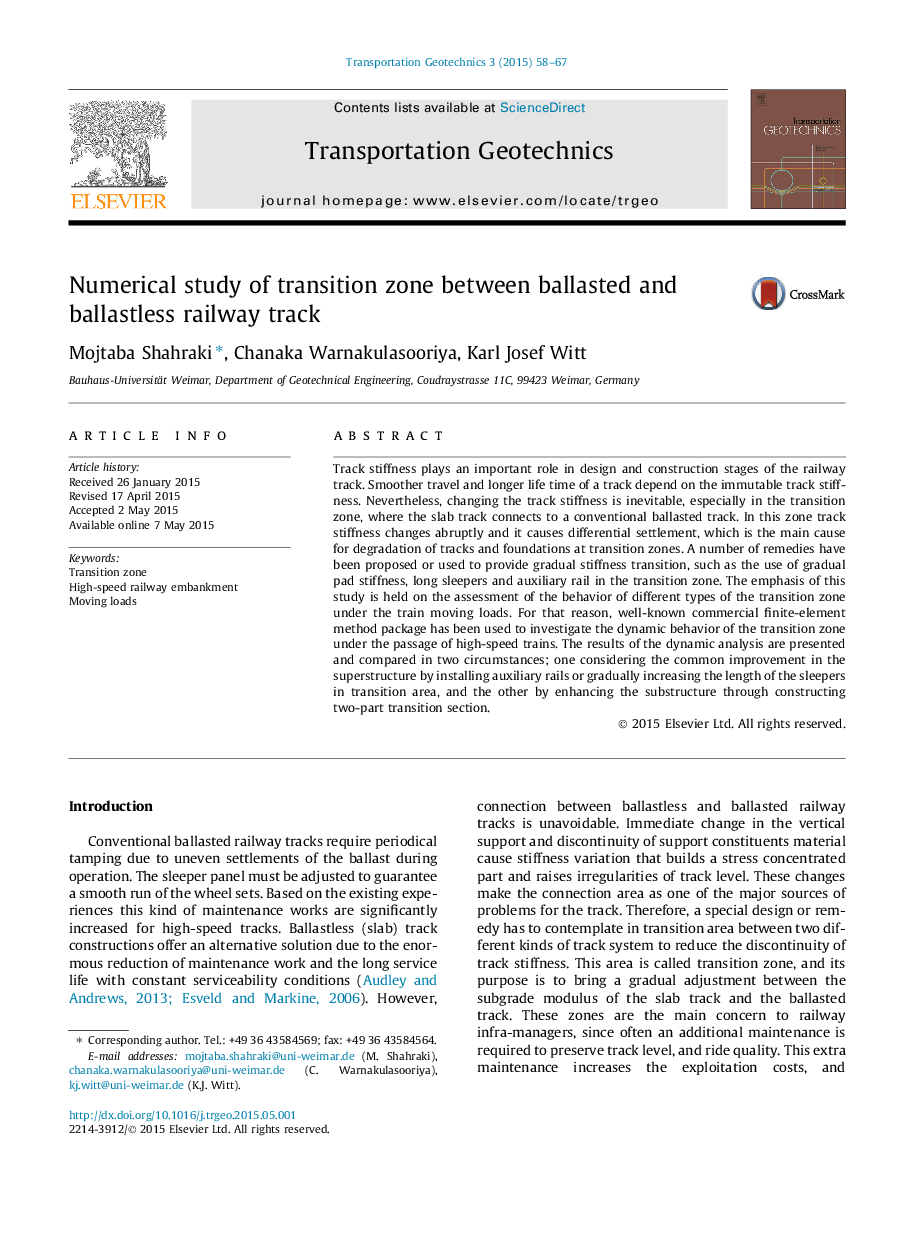| Article ID | Journal | Published Year | Pages | File Type |
|---|---|---|---|---|
| 310295 | Transportation Geotechnics | 2015 | 10 Pages |
Track stiffness plays an important role in design and construction stages of the railway track. Smoother travel and longer life time of a track depend on the immutable track stiffness. Nevertheless, changing the track stiffness is inevitable, especially in the transition zone, where the slab track connects to a conventional ballasted track. In this zone track stiffness changes abruptly and it causes differential settlement, which is the main cause for degradation of tracks and foundations at transition zones. A number of remedies have been proposed or used to provide gradual stiffness transition, such as the use of gradual pad stiffness, long sleepers and auxiliary rail in the transition zone. The emphasis of this study is held on the assessment of the behavior of different types of the transition zone under the train moving loads. For that reason, well-known commercial finite-element method package has been used to investigate the dynamic behavior of the transition zone under the passage of high-speed trains. The results of the dynamic analysis are presented and compared in two circumstances; one considering the common improvement in the superstructure by installing auxiliary rails or gradually increasing the length of the sleepers in transition area, and the other by enhancing the substructure through constructing two-part transition section.
